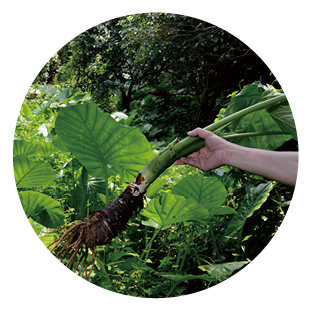
Food Safety Focus (158th Issue, September 2019) – Food Incident Highlight
Calcium Oxalate Raphides in Wild taro Irritate the Skin and Mucous Membranes
Last month, the Centre for Health Protection reported a case of suspected calcium oxalate raphide poisoning. The patient developed numbness and swelling over tongue and lips, vomiting and epigastric pain shortly after consuming a wild taro tuber she picked from roadside.
Some plants may look like taro, e.g. Giant Alocasia (also known as wild taro) and may contain calcium oxalate raphides (tiny needle-shaped crystals of the chemical) in its leaves and tubers. These needle-shaped crystals can penetrate the skin and mucous membranes and cause irritation.
Consumers are reminded: 1) not to pick and consume wild taro; 2) to purchase vegetables from reliable suppliers; 3) to remove any unidentified plants/objects mixed with edible vegetables; and 4) to wash vegetables thoroughly before cooking and consumption. The trade should not use the leaves of wild taro to cover vegetables during transportation and processing.

Taro-like plants


